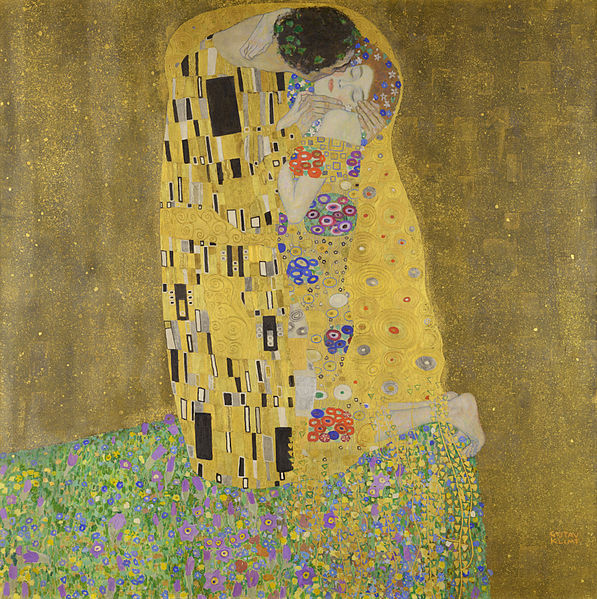Gustav Klimt, The Kiss
Historians have adopted the term fin-de-siècle, which literally means “end of the century,” to describe European culture of the late 1800s. This designation is not merely chronological but also refers to a certain sensibility. At that time, the increasingly large and prosperous middle classes were aspiring to gain the advantages that the aristocracy traditionally enjoyed. The masses, striving to live “the good life,” embraced a culture of decadence and indulgence. Characteristic of the fin-de-siècle period was an intense preoccupation with sexual drives, powers, and perversions. People at the end of the century also immersed themselves in the exploration of the unconscious. This culture was unrestrained and freewheeling, but the determination to enjoy life masked an anxiety prompted by significant political upheaval and an uncertain future. The country most closely associated with the fin-de-siècle culture was Austria.

The Viennese artist Gustav Klimt (1863-1918) captured this period’s flamboyance in his work, but tempered it with unsettling undertones. In The Kiss, his best-known work, Klimt depicted a kneeling couple locked in an embrace. The setting is ambiguous, an indeterminate place apart from time and space, perhaps a garden of flowers. Moreover, all the viewer sees of the embracing couple is a small segment of each body – and virtually nothing of the man’s face. The rest of the canvas dissolves into shimmering, extravagant flat patterning. This patterning has clear ties to Art Nouveau and to the Arts and Crafts movement and also evokes the conflict between two- and three-dimensionality intrinsic to the work of Degas and other modernists. In The Kiss, however, those patterns also signify gender contrasts – rectangles for the man’s garment, circles for the woman’s. Yet the patterning also unites the two lovers into a single formal entity, underscoring their erotic union.[1]
- Fred S. Kleiner, Gardner’s Art Through the Ages: The Western Perspective, vol. 2, 15th ed., (Boston: Cengage Learning, 2017), 747. ↵

